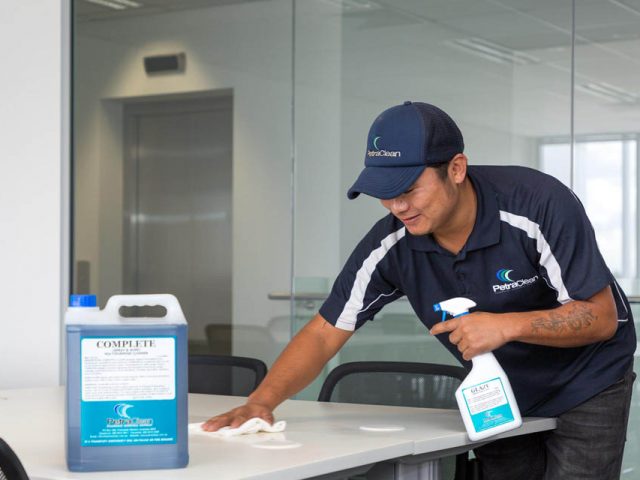A clean home is often seen as the foundation of a peaceful, organized, and healthy living environment. However, creating and maintaining a cleaning routine that works for everyone, especially in a busy family setting, can feel overwhelming. Between school runs, work commitments, and extracurricular activities, finding the time and energy to clean can become a major stressor. That’s why developing a family-friendly cleaning routine is essential—it ensures that everyone can pitch in, tasks are manageable, and the home remains organized without the stress.
In this blog post, we’ll discuss practical steps on how to create a cleaning routine that works for your entire family, with tasks divided by age and ability. The goal is to keep your home tidy, create shared responsibility, and maintain a clean living environment without burnout.
1. Assess Your Cleaning Needs
Before you dive into setting up a cleaning routine, take a step back and assess your cleaning needs. Consider the size of your home, how much time you can realistically dedicate to cleaning, and the areas that need attention most. The idea is to identify the specific tasks that need to be done and frequency.
Create a list of common household chores such as:
- Vacuuming
- Dusting
- Mopping
- Dishwashing
- Laundry
- Bathroom cleaning
- Bed making
- Wiping down surfaces
From this list, determine which tasks are non-negotiable daily chores (like dishes and making the bed), which should be done weekly (like bathroom cleaning and vacuuming), and what can be done monthly (like deep cleaning windows or organizing the garage). This will help you map out a clear and balanced routine.
2. Incorporate Family Participation
A successful family cleaning routine is one where everyone plays a role. Depending on the ages and abilities of your children, there are ways to involve everyone in the cleaning process. Younger kids may be able to help with simple tasks, while older children can take on more responsibility.
For Toddlers and Preschoolers (Ages 2-5):
- Put away toys and books in the designated areas
- Help wipe down surfaces with a damp cloth
- Place dirty clothes in the laundry hamper
- Help feed pets or water plants
For Elementary Schoolers (Ages 6-9):
- Make their bed
- Help sort laundry (matching socks, folding towels)
- Dust and wipe down tables and counters
- Vacuum small areas (with supervision)
- Empty trash cans
For Preteens and Teenagers (Ages 10-18):
- Clean bathrooms (scrubbing sinks, mirrors, and toilets)
- Wash dishes or load the dishwasher
- Mop and sweep floors
- Take out trash and recycling
- Clean windows or mirrors
- Assist with deep cleaning tasks like cleaning baseboards or organizing closets
It’s important to communicate that every family member, regardless of age, can contribute to keeping the home tidy. Be sure to assign age-appropriate tasks, and be patient as younger children learn. It’s more about building habits and a sense of responsibility than expecting perfection.
3. Set a Cleaning Schedule
Creating a cleaning schedule that works for your family is key to making it sustainable. Set aside specific days of the week for specific tasks, and assign roles to family members based on the tasks you identified earlier. This will not only keep everyone on track but also ensure that you don’t neglect any part of your home.
Here’s an example of a basic family-friendly cleaning schedule:
Daily:
- Make the beds
- Tidy up common areas (living room, kitchen, etc.)
- Do the dishes or load the dishwasher
- Wipe down kitchen counters and table
- Sweep or vacuum high-traffic areas
Weekly:
- Clean bathrooms (toilets, tubs, and sinks)
- Mop the floors
- Dust surfaces (shelves, furniture, etc.)
- Change bed linens
- Take out trash and recycling
- Clean out the fridge
Monthly:
- Clean windows and mirrors
- Organize the pantry or closet
- Deep clean kitchen appliances (oven, microwave)
- Wash pet bedding and toys
- Vacuum under furniture
Having a regular schedule can prevent tasks from piling up. It also helps establish routine, so cleaning becomes a normal part of your day rather than something to dread. Be realistic about how much time your family can commit—if you can only dedicate 20 minutes a day to cleaning, that’s perfectly fine! Adjust the schedule to fit your family’s needs.

4. Make Cleaning Fun
One of the best ways to create a family-friendly cleaning routine is to make it enjoyable. Kids especially can get bored or frustrated with cleaning if it feels like a chore. By turning cleaning into a fun, interactive activity, you can engage the whole family and make the process feel less like a burden. However, if you find that juggling work, family, and cleaning becomes overwhelming, you may want to consider hiring a cleaning company Bournemouth to help with more extensive cleaning tasks. A professional cleaning service can assist in maintaining cleanliness and hygiene in your home, allowing you to focus more on family time and less on the pressure of household chores.
Here are a few ideas to make cleaning more enjoyable:
- Create a Cleaning Playlist: Put together a playlist of upbeat songs that your family loves to play while cleaning. Music can make the tasks go by faster and keep everyone energized.
- Set a Timer: Challenge the family to complete a task within a set time limit (e.g., 15 minutes to tidy up the living room). It adds an element of competition, and everyone will feel accomplished when the timer goes off.
- Use Cleaning Games: Turn chores into games. For example, you can have a “cleaning race” to see who can pick up the most toys in five minutes, or assign points for tasks completed to earn rewards at the end of the week.
- Incorporate Incentives: Set up a reward system where kids can earn points for completing their chores, which they can exchange for extra screen time, a special outing, or a small treat.
When you make cleaning an enjoyable family activity, it becomes less of a struggle and more of a shared goal.
5. Use the Right Tools
When you have the right cleaning tools, maintaining a family-friendly routine becomes much easier. Stock your home with cleaning supplies that are safe, efficient, and accessible to everyone. Keep items like wipes, sponges, a handheld vacuum, and child-safe cleaning products in easy-to-reach places so that family members can use them without hassle.
If you have young children, be sure to choose cleaning products that are safe for them to be around. You can also involve them in the process by using non-toxic, eco-friendly cleaning products that are safe for the whole family.
6. Be Flexible
Life with a family is unpredictable, so it’s essential to remain flexible with your cleaning routine. There will be days when things don’t go according to plan—kids might get sick, work might run late, or an event might take up your time. When this happens, adjust the schedule as needed and don’t be too hard on yourself or your family.
If you fall behind one week, simply pick up where you left off and start fresh. Cleaning is an ongoing process, and it doesn’t have to be perfect every time. The key is consistency, teamwork, and creating a system that works for everyone.
Final Thoughts
Creating a family-friendly cleaning routine is about more than just having a clean house—it’s about fostering teamwork, responsibility, and a sense of accomplishment. By assessing your cleaning needs, involving everyone in age-appropriate tasks, creating a flexible schedule, and making cleaning fun, you can develop a routine that works for the entire family. With these tips in mind, you’ll soon have a more organized and tidy home—and a happier, healthier family life.






